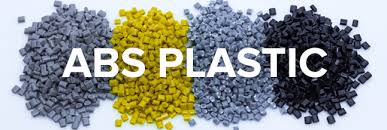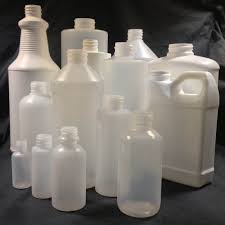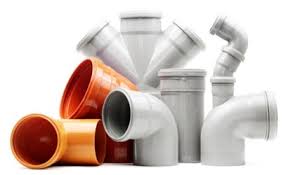Classification of
plastics materials, properties, and their composition chemistry
This Topic (Classification
of plastics materials, properties and their composition chemistry) will cover the
following questions to provide explanatory answers
·
Properties of plastic
·
Plastic definition
·
Chemical composition of plastic
·
Types of plastics
·
What is plastic made from
·
Nanotechnology and Plastics
·
Chemistry of plastic
·
10 different types of plastic
·
Types of plastic and their uses
·
Classification
of plastics
·
Plastic materials list
·
Types of plastics and their properties
·
Plastic recycling
·
High technical plastic
Introduction
to plastic
·
Plastic
is a material consisting of any of a wide range of synthetic or semi-synthetic
organic compounds that are malleable and therefore can be molded into solid
objects.
· Plastics are typically organic polymers of high molecular mass, but they often contain other substances. They are usually synthetic and most commonly derived from petrochemicals.
Types
of plastic and plastic materials
- Polyethylene terephthalate (PET or
PETE)
- High-density polyethylene (HDPE)
- Polyvinyl chloride (PVC)
- Low-density polyethylene (LDPE)
- Polystyrene (PS)
- Acrylic.
Strong and transparent, acrylic offers the same clarity as glass without
the risk of shattering. ...
- Polypropylene.
From temporary signage to printed advertising banners, polypropylene is a versatile
plastic with a myriad of uses
- PVC.
- Corflute.
- Nylon.
- High
Impact Polystyrene.
Plastics are generally
classified by the chemical structure of the polymer's backbone and side chains;
some important groups in these classifications include:
- Acrylics
- Polyesters
- Silicones
- Polyurethanes
- Halogenated plastics
Explanation of above-mentioned classification
Acrylonitrile Butadiene Styrene (ABS)
It is a terpolymer produced by polymerizing
styrene and acrylonitrile in the presence of polybutadiene. Most applications
can withstand temperatures of between -20–80°C (-4–176°F). Common applications
include electronic equipment cases such as computer monitors, printers, and
keyboards as well as a drainage pipe.
Polyester
(PES)
The Polyester can occur naturally, for
example in the cutin of plant cuticles, and synthetically through step-growth
polymerization such as polybutyrate. Natural polyesters and a few synthetic
ones are biodegradable, but most synthetic polyesters are not. Polyesters can
be found extensively in the clothing and textile industries.
Polyethylene (PE)
The Polyethylene is the
most common plastic with an annual global production of approximately
80-million tons. It is mainly used in the packaging sector for plastic bags, plastic
films, and containers (including bottles).
High-density
polyethylene (HDPE)
The High-density
polyethylene also known as polyethylene high-density (PEHD) is a thermoplastic
derived from petroleum with a high strength-to-density ratio. It used in
detergent bottles, milk jugs, plastic bottles, corrosion-resistant piping,
geomembranes, and plastic lumber. When used for pipes, it is sometimes called
alkaline or polythene.
Low-density polyethylene (LDPE)
The Low-density polyethylene is a thermoplastic made from the monomer
ethylene. First produced in 1933 by Imperial Chemical Industries (ICI), its implementation remains widespread in
outdoor furniture, siding, floor tiles, and packaging despite competition from
modern polymer
Polyethylene terephthalate (PET)
The Polyethylene
terephthalate commonly abbreviated PET or PETE is the most common
thermoplastic polymer resin of the polyester family. It is used in fibers for
clothing, containers for liquids and foods, thermoforming for manufacturing,
and in combination with glass fiber for engineering resins. Brand names
include Dacron, Terylene, or Lavsan.
Polyurethane (PUR and PU)
The Polyurethane (PUR and PU) is a polymer composed of organic units
joined by carbamate (urethane) links. Most polyurethanes is thermosetting
polymers that do not melt when heated, common applications include: cushioning
foams, thermal insulation foams, surface coatings, and printing rollers. It is
the most commonly used plastic in automobiles.
Polyvinyl
chloride (PVC)
The Polyvinyl chloride
(PVC) is also known as PVC, polyvinyl or vinyl and is the world’s third-most
widely produced synthetic plastic polymer after polyethylene and polypropylene.
PVC is available in either a rigid (RPVC) or flexible form. Common applications
for RPVC include plumbing pipes, gutters, doors, window frames, and bank or
membership cards.
Chemical recycling of Plastics
Advanced recycling,
also called “chemical recycling,”
refers to several different processes that use existing and emerging
technologies that return post-use plastics to their basic chemical building
blocks for creating a versatile mix of new plastics, chemicals, fuels, and
other products.
These
outputs include:
- Virgin Like Plastics
- Specialty Chemicals
- Basic building blocks (monomers)
- Chemical feedstocks (naphtha)
- Fuels
- Other products (e.g. waxes)
Three
primary categories of advanced recycling technologies
There are three primary categories of advanced recycling
technologies that process used plastics into new plastics and products.
- Purification – Used plastic is dissolved in
a solvent to remove additives, resulting in a purified near virgin
plastic.
- Decomposition/depolymerization – The molecular bonds of used
plastic is broken, resulting in molecules (monomers) from which plastics
are made.
- Conversion – The molecular bonds of used plastic is broken and recombined, resulting in hydrocarbons and chemical feedstocks similar to products made by petroleum
Advantages
and Disadvantages of Plastic:
Advantages of plastic
are
·
They can be easily molded and have
excellent finishing.
·
They possess very good strength and
toughness. They possess good shock absorption capacity.
·
Advantages of plastic are corrosion
resistant and chemically inert
· They have low thermal expansion of
co-efficient and possess good thermal and electrical insulating property.
·
Advantages of plastic are Very cheap to
make. Durability
·
Chemical resistance
Disadvantages of
Plastic
·
Plastic is a nonrenewable
resources. Plastic is softness.
·
Causes CANCER
·
Disadvantage of plastics are
embrittlement at low temperature.
·
Disadvantage of plastics are deformation
under load.
·
Disadvantage of plastics are low heat
resistant and poor ductility.
·
Disadvantage of plastics are
combustibility.
High
technical plastic:
Plastic
solar cell
An organic solar cell (OSC) or plastic solar cell is a type of photovoltaic that uses organic electronics, a branch of
electronics that deals with conductive organic polymers or small organic
molecules, for light absorption and charge transport to produce electricity
from sunlight by the photovoltaic effect.
Nanotechnology
and Plastics
Nanotechnology can also be used to create highly advanced plastics and composites
with enhanced strength, heat or UV resistance, electrical conductivity. One of
the most notable instances of plastic nanotechnology use involves the
construction of plastic nanotubes for the conduction of electricity. These
tubes are as conductive as copper but are far more flexible, lightweight, and
durable.
Incineration
· Incineration with energy
recovery is one of several waste-to-energy technologies such as gasification, pyrolysis, and anaerobic
digestion. While incineration and gasification technologies
are similar in principle, the energy produced from incineration is
high-temperature heat whereas combustible gas is often the main energy product
from gasification. Incineration and gasification may also be implemented
without energy and materials recovery.
·
Two
of the primary advantages of incineration are that waste volumes are reduced by
an estimated 80-95% and the need for land and landfill space is greatly
reduced For urban areas, this can be especially important, as urban land is
often at a premium.
·
Waste
incineration plants can be located near where waste is generated, which
decreases the costs and energy associated with transporting waste Through
Waste-to-Energy processes, incineration can be used to produce electricity and the heat that can be used to power and heat nearby buildings, and the ash produced
can be used by the construction industry
Disadvantages:
·
It is Expensive. The installation of an incineration plant is an
expensive process.
·
Pollutes the Environment. Incinerators produce smoke during the burning process.
·
Damaging Public Health.
·
The Possibility of Long-term Problems.
·
Ash Waste Can Potentially Harm People and the Environment.
Advantages:
·
Elimination of
groundwater contamination.
·
Energy generation.
·
Lower carbon footprint.
·
Incinerators have emissions treatment
systems to eliminate pollutants from exhaust air.
·
It has a computerized monitoring system.
Plastic recycling:
Plastic recycling is the process of recovering scrap or waste plastic and
reprocessing the material into useful products. The majority of plastic is non-biodegradable; recycling is
a part of global efforts to reduce plastic in the waste stream, especially the
approximately 8 million metric tonnes of waste plastic that enters the Earth's ocean every year.
- Step 1: Collection.
- Step 2: Sorting.
- Step 3: Washing.
- Step 4: Resizing.
- Step 5: Identification and
separation of plastics.
- Step 6: Compounding.
Recycling separation technique:
·
Several techniques applied to recycling plastic.
·
Sink float separations.
·
Electrostatic separation
·
Dry separation
Career Prospects in Plastic Engineering and Technology
There is vast scope for engineers in areas such as polymer
technology, textile technology, communication, computers, automobile, thermal
engineering, and so on. There are lots of job opportunities available in Pakistan
as well as in foreign countries.
·
The plastics and polymer the industry is growing at fast.
· The transport sector, household
appliances, and goods, packaging and electricity, and telecommunication are the
major areas, which demand plastics, hence are creating employment opportunities
in this sector. For instance, synthetic rubber is now in great demand.
·
In the public sector, plastics
engineers/technologists and technicians may find employment in:
·
The Ministry of Petroleum and
Natural Gas
·
Oil and Natural Gas Commission,
and Oil Laboratories
·
Petrochemicals Engineering
Plants
·
Polymers Corporations of
different states
Note: Writing of This article Title “Classification
of plastics materials, properties and composition in chemistry” credit goes to MPhil
scholar in chemistry name Munaza shams from GCWUF department of chemistry, Faisalabad Pakistan.
N












No comments:
Post a Comment